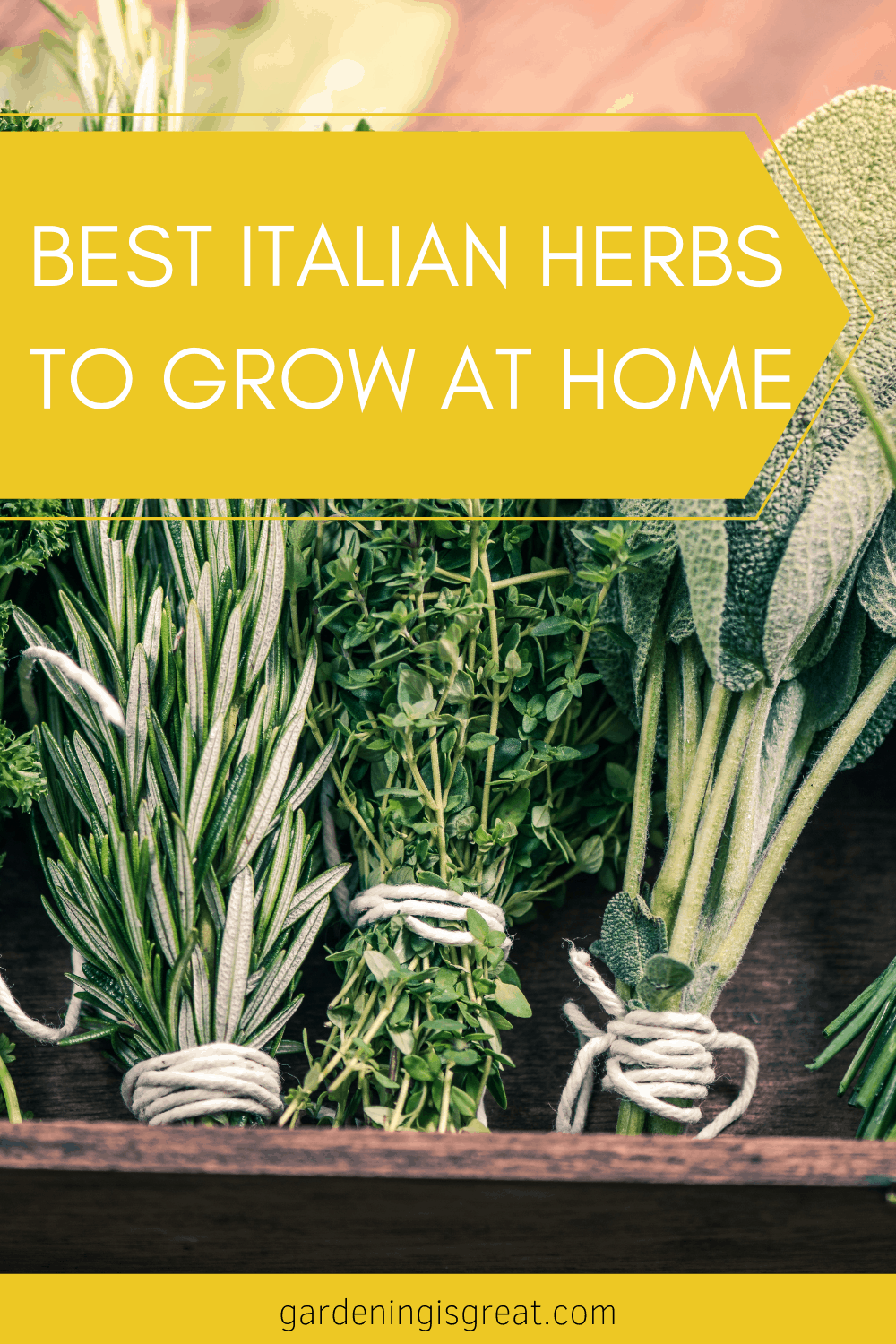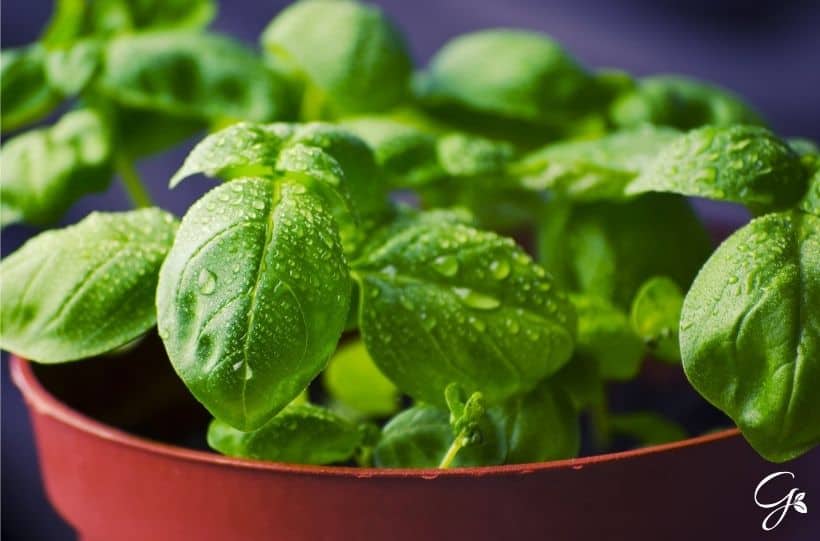3 Herbs To Grow For Your Italian Herb Garden
Italy is well known for its delicious freshly made pizza and pasta. The flavors are fresh, rich, and like no other pizza or pasta you’ve ever tasted.
But that isn’t just to do with the way Italians cook or the recipes shared from generation to generation. The reason for their amazing food stems from the fresh, Italian herbs used.
Italian herbs bring out the best flavor in any ingredient. And you can replicate this at home by growing your own Italian herbs.
These herbs can grow both indoors or outside, but if you want easy year-round access to fresh Italian herbs, then the best option would be to grow them indoors
Take a look at these 3 Italian Herbs that you can grow at home in your very own herb garden.

Basil
We couldn’t not start our list with one of the most used herbs to compliment a tomato-based sauce, basil.
Being a part of the mint family, this Italian herb is sweet and versatile. Not only is it able to be used in pasta sauces and pizza bases, but it also is great eaten raw with mozzarella and tomato, or added to curries.

How to Grow
Basil is an annual plant which means it needs replanting every year. You can grow basil directly from basil seeds which need sowing into small pots in Spring.
This herb prefers well-drained soil and to be positioned out of direct sunlight.
Once seedlings are potted in Spring, they will take around 22 days to germinate. At this point, you can transfer the small plants to individual pots. If the weather is still quite cool, ensure to keep your basil plants indoors as they grow best in warmer weather.
As they grow, you can either keep them indoors for easy access to cook with or, if moving outdoors, be sure to do so gradually so they climatize to their new environment. Each day, place them outdoors for a short amount of time. Gradually increase this time over the next two weeks.
How to Harvest
Basil grows quite quickly and provides new leaves throughout the summer months. When you are ready to harvest, pick a few leaves from the top and sides. Ensure to leave a few side shoots to help the plant regrow and produce more leaves.
The leaves are best used fresh but can be stored in the fridge for up to 3 days.
Oregano
Second, to basil, oregano is another popular herb used all over the world. It is often used in its dry form, but for a stronger flavor, it is best to grow oregano and use its fresh leaves.
Oregano grows in long strips with small, delicate leaves growing along the stems. If left to bloom, it also produces pink and purple flowers that are also edible and can be added to salads for a burst of color.

How to Grow
Similar to basil, oregano is best grown indoors when sown from seeds. You can begin sowing between February and May.
The seeds can take between 7-14 days to germinate at which time they need to be transferred to a larger pot.
Oregano does best regularly watered while ensuring the soil is not constantly too wet otherwise the roots will rot. This herb also likes the sun so if grown indoors ensure to position it on a sunny windowsill.
Unlike basil, oregano is a perennial herb which means that it will grow back the following year. You can expect it to die back during the winter months when it is too cold for the plant, but it will begin to regrow from the stems the following spring. If you are growing this Italian herb outdoors, you will need to bring it indoors for the winter.
How to Harvest
Oregano can be harvested as needed to use fresh or in larger amounts to be dried.
If using fresh, you can cut a few shoots and remove the leaves to use.
For drying, cut a large bunch of stems and hang them upside down to dry. Once they are fully dried, you can remove the leaves from the stems, crush them and store them in an air-tight container.
Rosemary
Like basil and oregano, rosemary is also a herb that is part of the mint family. It has a strong aroma and is commonly used when cooking meat or to flavor bread such as focaccia.
Rosemary grows on long stems with dark green, thin needle-shaped leaves. If left to flower, it provides delicate blue, purple, or pink flowers depending upon the variety.

How to Grow
Rosemary grows as a shrub and can grow quite large, so this is best to keep in mind depending upon whether you are growing it indoors or outside.
This Italian herb prefers well-drained soil with access to direct sunlight. It is quite challenging to grow Rosemary from seeds as the seeds need to be fresh with ideal growing conditions. This isn’t always easy to achieve.
So instead, it is often best to grow Rosemary from a plant purchased at your local gardening center, or from a cutting. If you have a cutting, you need to remove the leaves from the bottom of the stem and place it into a perlite and peat moss mixture. Ensure to spray this with water to encourage roots to develop. After this, your plant can be transferred to a pot with fertilized soil.
Rosemary does not like the winter or frost. If you have chosen to grow rosemary outdoors, it is best to have been planted in a pot so you can bring it indoors before the first frost.
How to Harvest
Rosemary is a perennial plant so will regrow year after year if cared for. In saying that, this herb does not require that much maintenance so is easy to look after.
When you want to harvest the leaves, you can carefully remove some of the top sprigs from the stems. It is best used fresh due to its fragrance and strong flavor. But it can also be dried and stored in an air-tight container.
To ensure your rosemary plant returns each year, you need to cut back your plant after flowering. This will encourage new growth the following season.

Growing these 3 Italian herbs to create an Italian herb garden at home will provide you with delicious, fresh flavors and aromas to complement multiple dishes. Each herb can be dried or used fresh and requires very little maintenance.
If you are looking for more herbs from around the world to add to your herb garden, take a look at these suggestions:

